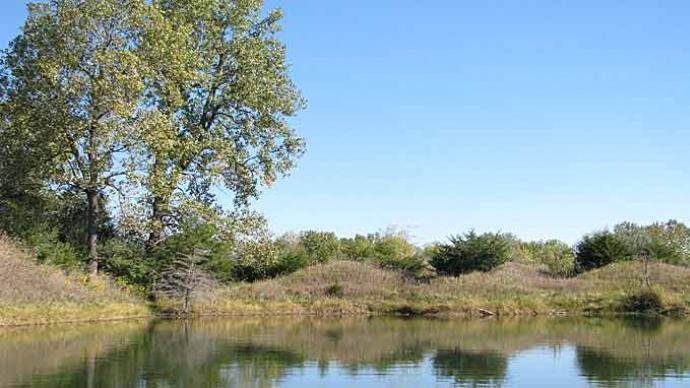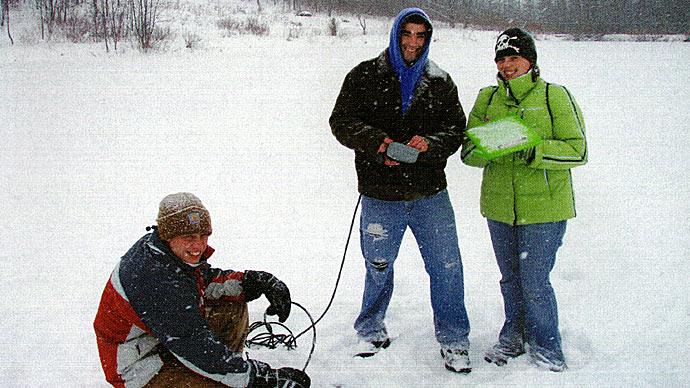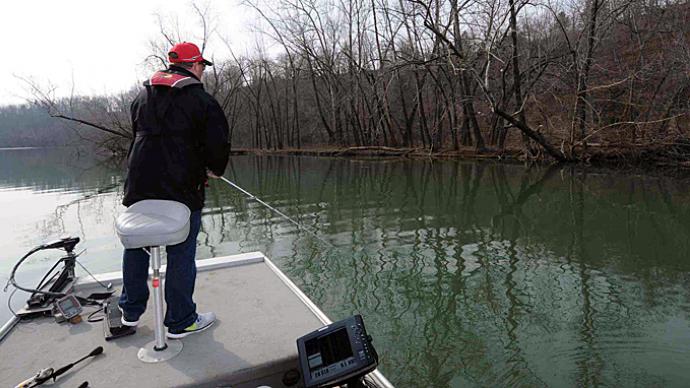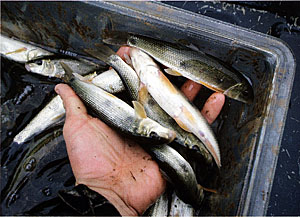
As attention is drifting away from football, hunting season and holidays, we still should think about our ponds and the wet, cold creatures which live in the icy depths.
Whether you're located in northern Maine or South Texas, all pond owners motivated to produce and maintain a trophy fishery must have focus, even right now. Simply keeping your pond on your mind gives you an edge well before trees are thinking about budding.
Right now is the time to make plans and set up a task list and a time line to accomplish all you want to do. Put your pond calendar together. First, define the mission. If trophy fish management is a main goal, spend some time refining your knowledge about target species and their prey. Cutting edge management strategies have biologists competing. Competition breeds innovation. There are a number of innovative ideas being tried all over the nation right now.
Next, plan your strategy. Did you harvest enough medium-size predators last year? Keep good records'? Feeders full all year? Water clarity as it should be? Genetics in good shape?
Always remember this ... trophy fisheries don't just happen. They are thoughtfully planned and the plan executed in a timely fashion.

With your plan in hand, figure out the tasks to complete. Are winter-stored feeders in good shape? Timers, batteries, motors... wires? If you don't know, check them now and make repairs so you don't miss time this spring. And make sure those batteries are charged and ready to go.
Do you have all supplies on hand to jump start the new growing season? Now is the time to shop. If you wish to buy, do it now. Many companies run sales this time of year, a traditionally slow time for selling anything aquatic.
Does your pond have the best habitat? Winter months are a good time to take care of the, project. Decide what types of structure you pond needs and do it now. Add brush piles Christmas trees, rock piles and other type and styles of fish attractors. In the south, do it from a boat. In the north, place your structure on ice, anchor it through the ice, and maybe to the shore, if you want to keep it in a specific place and it will fall in place after the ice melts.
In light of the current status of our economy and political changes, you may choose to put together a pond budget. What you buy and how you manage the pond can certainly have a impact on its progress. For example, if you must cut back, perhaps cut back on herbicides and increase feed. Instead of missing the timing to fertilize as we tend to do during a busy spring, keep'your calendar in front of you and get things done on time this year. Figure out the difference between "needs" and "wants." Believe me, those two can vary from year to year, but if you keep your goals sharply focused, you will see the difference quickly.
Most importantly, on a limited budget, be sure to think how your decisions today will affect the fishery over the next couple years. Budgets will change, and if you keep the fishery thoughtfully maintained, you won't be trying to undo in the future what happened in your pond today.
Most ponds and lakes require permits for one reason or another. When obtaining permits, it is best to apply several months ahead before carrying out the task. Some states have deadlines for applications; make sure the appropriate paper work is filed on time. Pond consultants can help obtain necessary permits. Remember, all ponds located in or around wetland areas are regulated with greater scrutiny. Get to know your state fisheries officers. It will be beneficial when obtaining permits or getting site visits.
When planning your upcoming tasks, it is important to know the fish in your pond. Using data from the previous years, good management decisions can be made. Keep in mind, it's important to have good records. Good data helps you decide which fish to cull, which fish to stock, how much forage will be needed, whether to tweak your feeding program and if you should deal with unruly aquatic plants.
Making adjustments to fish populations is important and needs to be done sooner rather than later. If you haven't been able to harvest enough of those targeted fish, it may be time to have your pond or lake electrofished. Electrofishing is great to sample most fish populations to get a quick "snapshot" of what's going on under your water. You can also be prepared to allow the fisheries pro to harvest some of those slot fish in order to move or fillet them. Think it through before the boat arrives.

Know when your fish spawn and use that knowledge to determine fish removal strategies. For example, don't remove panfish from your pond until after they spawn. After the spawn, they leave the nests and female's bellies don't look like they have marbles in them. It's simple, and it can greatly affect the quality of your fishery. Conversely, we know female bass grow larger than their male counterparts. It's easier to tell the difference between the two before spawning season. It may make good sense to harvest males before the spawn and release your best females. Don't worry about harvesting too many males. Your pond won't allow it. Besides, all you need are three or four males sittinc, on nests to wind up with too many baby bass, anyway.
If your pond is overpopulated, schedule a fishing tournament with friends and family or your church or local scout troop. Collect data on all fish caught and you'll give everyone a sense of ownership.
Here in upstate New York, to get the most accurate representation of our bass and sunfish, we sample our waters at night when the water temperature is between 60 and 75 degrees. But, we are mostly sampling shallow lakes. Look into which water temperatures are best for sampling your fish and pencil it in on the calendar. If collecting fish using other sampling methods such as seine nets, trap nets or angling, be sure to log as much data as possible. Record length and weights, every time. Girth measurements are also helpful for you to see seasonal changes of your biggest fish. If you are scientifically inclined, we recommend using metric units because it is more accurate. With length and weight data you can determine relative weight (RW). If relative weights are low, you most likely are lacking adequate forage fish populations, have too many predator mouths to feed or are living with poor water quality. We see lakes where fish are working so hard to live through poor water quality in the summer that their bodies reflect it in the fall.
If your relative weights are high, you are doing something right. Try to figure out what that is so you can keep them that way. Plan, Plan, Plan! Use lateral line scale samples to determine if your fish are getting old. Flatten them, add a drop of some diluted iodine or Betadine to the scale to dye them, look under a magnifying glass Begin and count the rings, just like a tree. Bein-, at an edge and count to the middle. Do this with several scales from the same fish and get an average. Each ring represents one full year of age. Age matters. If your bass have been "stunted" for several years, knowing how old they are can affect your management strategy. Older fish may not be worthwhile to focus much time and dollars.
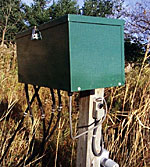
To keep pace with goals, you may need to purchase fish. Going into the spring, determine what species need to be stocked and how many. Be sure to record what you're stocking and plan now. Many hatcheries sell out of their stock each spring.
Water quality data collected over the years will be important as well. Remember, you're trying to improve your pond, not just maintain it. Set your goals to encourage productivity. Whether you stock grass carp, treat with herbicides or make your pond deeper, always think outside of the box. In many private ponds, water quality is the limiting factor.
Depending on the size of your pond, you may want to reconsider where your feeders have been placed in prior years. Make sure they are in strategic places, not j List convenient places. In most management applications feeders should be located at or near the premier spawning areas for both forage fish and sportfish. If you have a small pond and want to congregate bass near a dock, then go for it. If you have a large pond, pay attention to where your baitfish spawn. Be sure to feed near, but not on top of, the spawning beds.
When getting ready for another warm season, check your equipment. Think about everything from boat fluids to docks and dock lighting. Check sampling equipment, water quality test kits and aeration systems. If you have a windmill aerator, be sure to grease it, per manufacturer instructions. If you use an aeration pump, change the filter, if needed, and see that it runs properly. If you are a true pondmeister, I recommend purchasing a temperature gauge for your aerator, which will turn the unit on and off depending on air temperature. Using simple technology, you can extend your pond's growing season four to six weeks longer than normal.
If you sample fish using seines or trap nets, make sure mice haven't made a home of them. If your assessment gear includes your fishing pole, be sure to keep a small tackle box of barbless lures around.
Spring tasks include checking pond overflow pipes and spillways to make sure they are open and operating. Don't wait until a rainyday. Other tasks that can enhance your pond include: putting in tile, French drains or terraces to funnel more rainwater, pest control and removal, poor water quality solutions, such as aeration or liming, and enhancing wildlife around your pond with attractants or plantings.
Creating a trophy fishery requires preparation to ensure tasks are carried out in a timely manner. Having a general idea of how much money can be spent also enhances thoughtful decision-making. Knowing your goals and having a practical time line will keep you on pace. Once you achieve your trophy fishery, make sure to continue good management practices. Remember, have fun and enjoy your time in the outdoors.
There is no better time than right now to make plans for the year. Besides, planning for your pond and the year ahead helps beat cabin fever.
Reprinted with permission from Pond Boss Magazine

